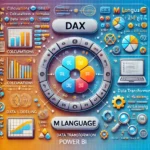SPSS vs. GraphPad: Choosing the Right Data Analysis Tool
In the world of data analysis, selecting the right tool can significantly impact the quality and efficiency of your work. When it comes to statistical analysis and graphing, two popular contenders are IBM’s SPSS (Statistical Package for the Social Sciences) and GraphPad Prism. In this blog post, we will explore these two powerful platforms, highlighting their strengths, use cases, and differences to help you decide which one is best suited for your data analysis and visualization needs.
Understanding SPSS:
SPSS, developed by IBM, is a comprehensive statistical software package widely used in various fields, including social sciences, healthcare, and market research.
Key Features of SPSS:
- Statistical Analysis: SPSS offers an extensive array of statistical tests and techniques, making it ideal for in-depth data analysis.
- Data Preparation: It excels in data cleaning, transformation, and management, ensuring data quality and integrity.
- Data Visualization: While SPSS provides basic data visualization tools, its primary focus is on generating detailed statistical outputs.
- Advanced Analytics: SPSS supports complex statistical modeling, regression analysis, and factor analysis.
- Reporting: It generates detailed reports, tables, and charts for presenting analysis results.
Exploring the Power of GraphPad Prism:
GraphPad Prism, on the other hand, is specialized software designed for scientific graphing, curve fitting, and data visualization. It is widely used in fields such as biology, pharmacology, and life sciences.
Key Features of GraphPad Prism:
- Data Visualization: GraphPad Prism excels in creating publication-quality graphs and charts, making it ideal for visualizing scientific data.
- Curve Fitting: It offers advanced curve fitting tools, allowing users to model complex relationships in their data.
- Statistical Analysis: While primarily a graphing tool, GraphPad Prism includes basic statistical analysis capabilities for simplicity and convenience.
- Ease of Use: GraphPad Prism is known for its user-friendly interface and straightforward workflow.
- Report Generation: It facilitates the creation of clear and concise reports for sharing research findings.
https://synapsefabric.com/2023/09/01/spss-vs-sas-a-battle-of-data-analysis-titans/
SPSS vs. GraphPad Prism: A Comprehensive Comparison
Let’s delve into a detailed comparison of SPSS and GraphPad Prism across various dimensions:
| Aspect | SPSS | GraphPad Prism |
|---|---|---|
| Primary Use Case | Advanced statistical analysis and research. | Scientific graphing, curve fitting, and data visualization. |
| Data Visualization | Primarily focused on generating detailed statistical outputs. | Specializes in creating publication-quality graphs and charts. |
| Data Preparation | Robust data cleaning, transformation, and management features. | Limited data preparation capabilities, primarily geared toward graphing. |
| Advanced Analytics | Strong support for complex statistical analysis. | Limited advanced analytics, with a focus on data visualization and curve fitting. |
| Learning Curve | Steeper learning curve due to complex statistical concepts. | User-friendly interface suitable for scientists and researchers. |
| Automation | Supports automation through syntax scripting. | Limited automation capabilities, more focused on manual interaction. |
| Data Source | Suited for structured datasets, common in research and surveys. | Suitable for various structured scientific data sources. |
| Licensing | Typically requires individual or institutional licenses. | Available through individual or institutional licenses. |
Making the Right Decision:
The choice between SPSS and GraphPad Prism depends on your specific data analysis and visualization needs. If your primary focus is on advanced statistical analysis, especially in research or social sciences, SPSS is the natural choice. On the other hand, if you need to create publication-quality graphs, visualize scientific data, and perform basic statistical analysis, GraphPad Prism is a more suitable tool.
In some cases, these tools can complement each other effectively. You might perform statistical analysis in SPSS and then use GraphPad Prism to create compelling visual representations of your findings.
Ultimately, your decision should align with your objectives, the nature of your data, and your familiarity with the tools. Both SPSS and GraphPad Prism offer unique strengths, and understanding these differences is crucial for effective data analysis and visualization. Whether you’re a data scientist exploring complex statistical relationships or a scientist aiming to present research data elegantly, the choice between SPSS and GraphPad Prism ultimately depends on your unique goals and requirements.






